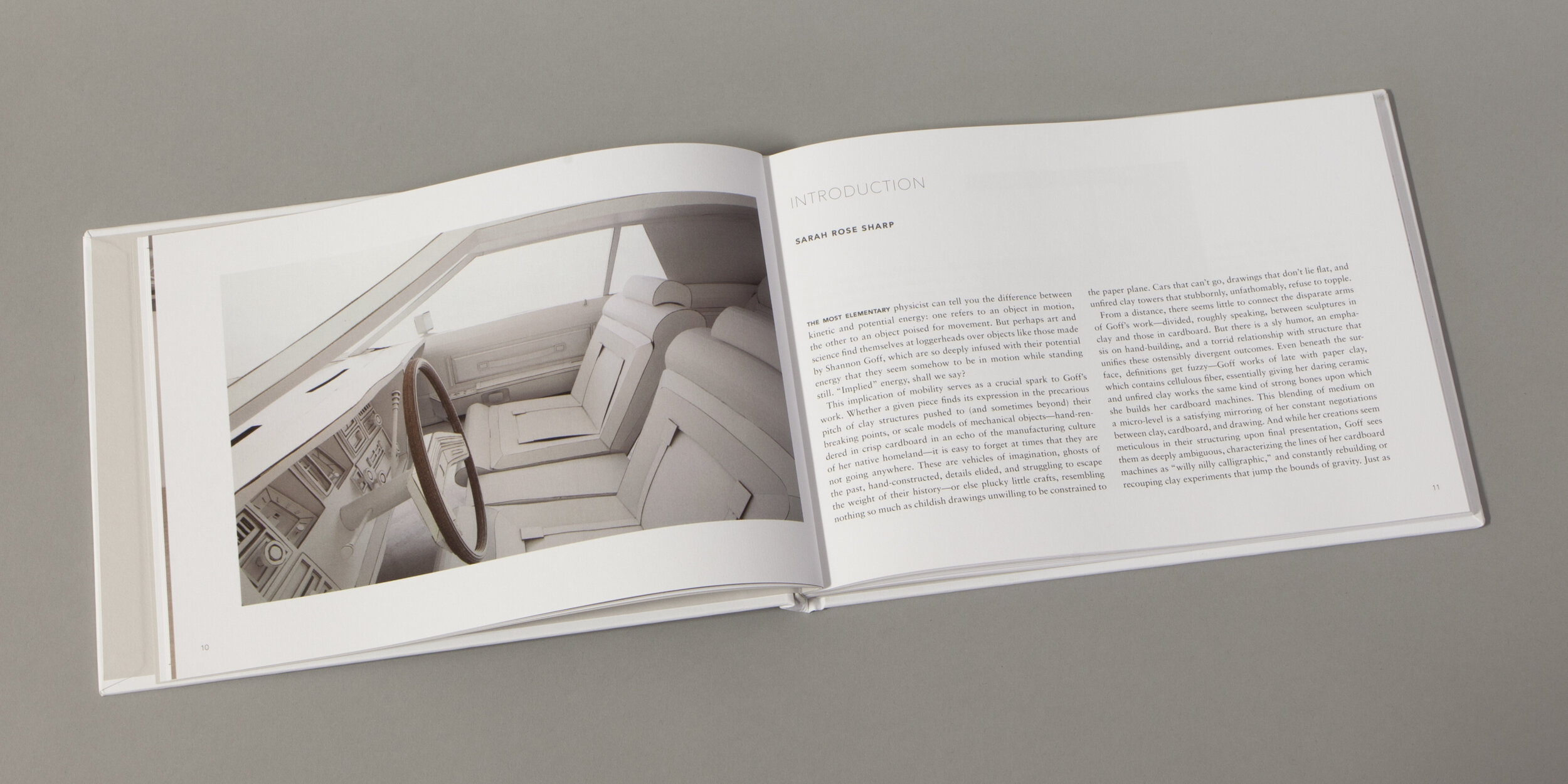Introduction
by Sarah Rose Sharp, Art Writer
THE MOST ELEMENTARY physicist can tell you the difference between kinetic and potential energy: one refers to an object in motion, the other to an object poised for movement. But perhaps art and science find themselves at loggerheads over objects like those made by Shannon Goff, which are so deeply infused with their potential energy that they seem somehow to be in motion while standing still. “Implied” energy, shall we say?
This implication of mobility serves as a crucial spark to Goff ’s work. Whether a given piece finds its expression in the precarious pitch of clay structures pushed to (and sometimes beyond) their breaking points, or scale models of mechanical objects –hand-rendered in crisp cardboard in an echo of the manufacturing culture of her native homeland – it is easy to forget at times that they are not going anywhere. These are vehicles of imagination, ghosts of the past, hand-constructed, details elided, and struggling to escape the weight of their history – or else plucky little crafts, resembling nothing so much as childish drawings unwilling to be constrained to the paper plane. Cars that can’t go, drawings that don’t lie flat, and unfired clay towers that stubbornly, unfathomably, refuse to topple.
From a distance, there seems little to connect the disparate arms of Goff ’s work – divided, roughly speaking, between sculptures in clay and those in cardboard. But there is a sly humor, an emphasis on hand-building, and a torrid relationship with structure that unifies these ostensibly divergent outcomes. Even beneath the surface, definitions get fuzzy – Goff works of late with paper clay, which contains cellulous fiber, essentially giving her daring ceramic and unfired clay works the same kind of strong bones upon which she builds her cardboard machines. This blending of medium on a micro-level is a satisfying mirroring of her constant negotiations between clay, cardboard, and drawing. And while her creations seem meticulous in their structuring upon final presentation, Goff sees them as deeply ambiguous, characterizing the lines of her cardboard machines as “willy nilly calligraphic,” and constantly rebuilding or recouping clay experiments that jump the bounds of gravity. Just as with language, the details of Goff ’s subjects become imprecise as she translates them between media – and yet, these blurring alterations simultaneously serve to cast their nature into sharp relief.
In her recent exhibition at Susanne Hilberry Gallery, we find Goff bridging the space between two galleries with one of her in-site unfired clay constructions, “Doyenne,” improbably built at 1:1 roughly scale with her own body. This would seem to outright defy the concept of mobility, since the piece itself cannot be moved without shattering (unlike the sculpture, Miles to Empty, a 1979 Lincoln Continental Mark V in cardboard that travels, ironically, by truck). But “Doyenne” requires no suggestion of movement to animate it; the doyenne is of course the gallery’s eponymous owner and longtime steward of the Detroit Metro art scene – at the time approaching the end of her long battle with cancer. The implied energy of this piece lies in the synergy of a delicately constructed and full-skirted figure, perfectly suited to her environment. This doyenne does not need to go anywhere; her spirit is already home.
As for the earthly remains of Goff ’s large constructions, they will go the way of all flesh. These pieces are inevitably dismantled upon de-installation – but if we again turn to any young students of physics, they can tell us that energy can be neither created nor destroyed. Even when a vehicle is disabled, Miles to Empty illustrates its enduring horsepower as a symbol. For Goff, there is a constant drive to salvage fragmented works – glazing mistakes, kiln explosions, structural collapse – pulling reconfigurations out in chunks, or fully reconstituting the unfired clay for a new body of work. In this way, she demonstrates a key component of a Detroit native artist, rising ever from the ashes, hoping for better things – and with such fuel in her tank, surely miles and miles yet to go.
